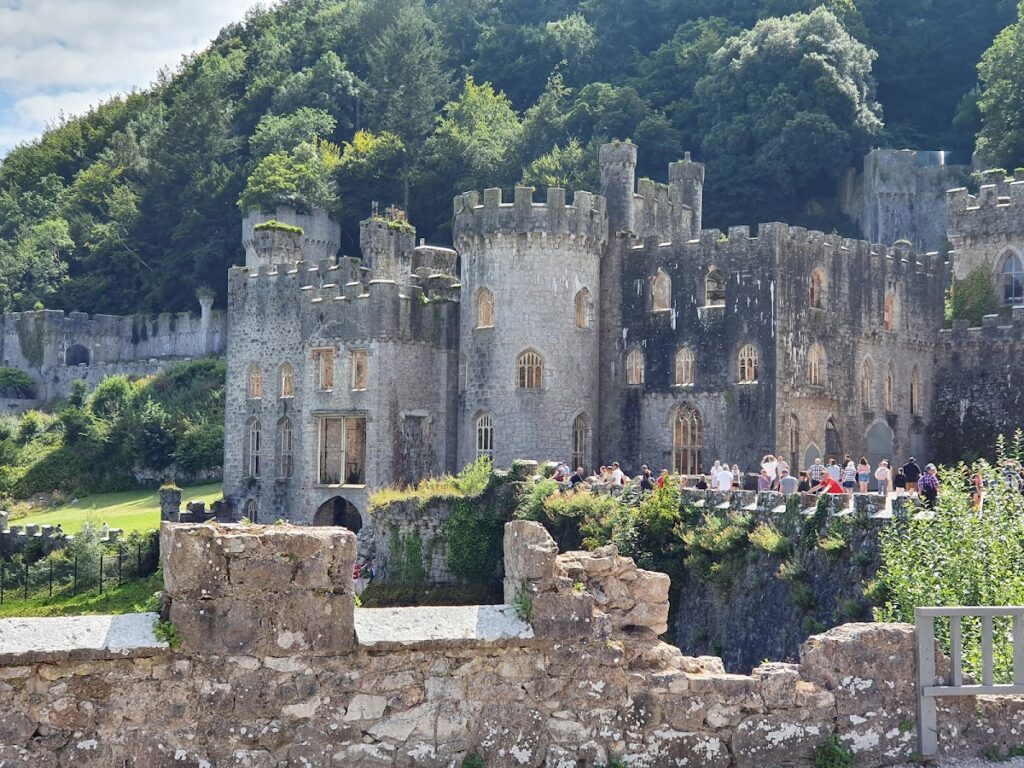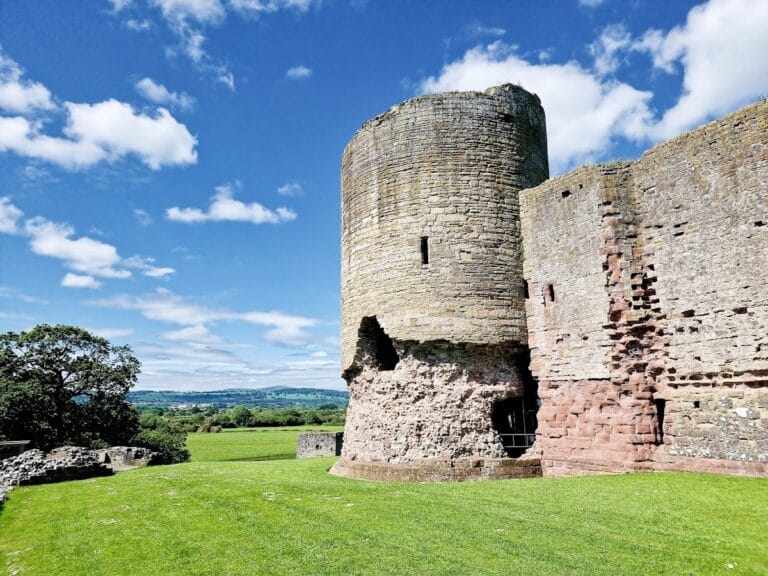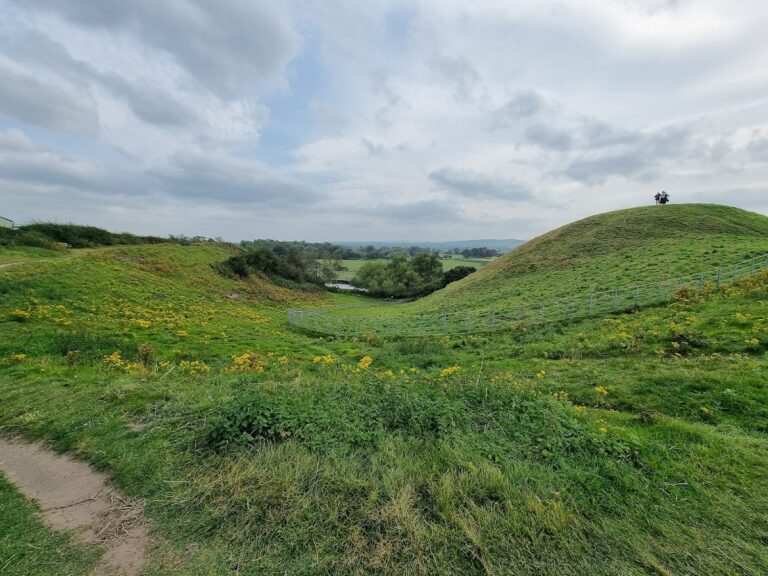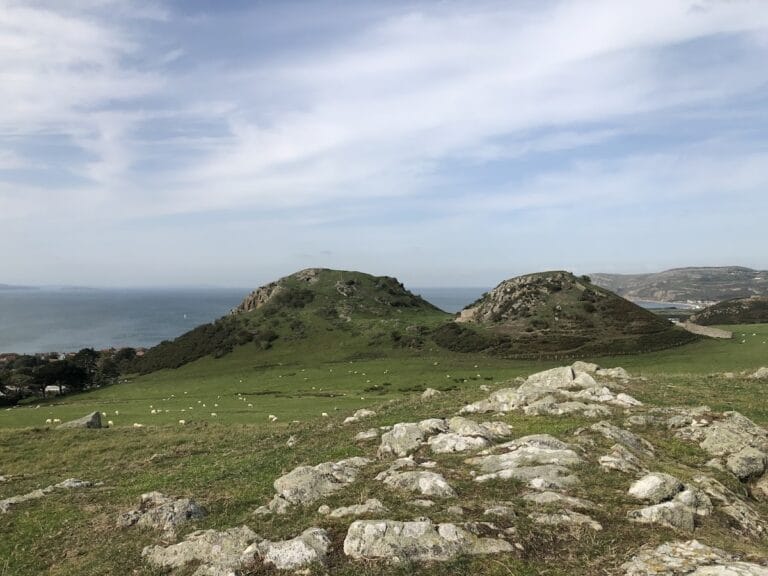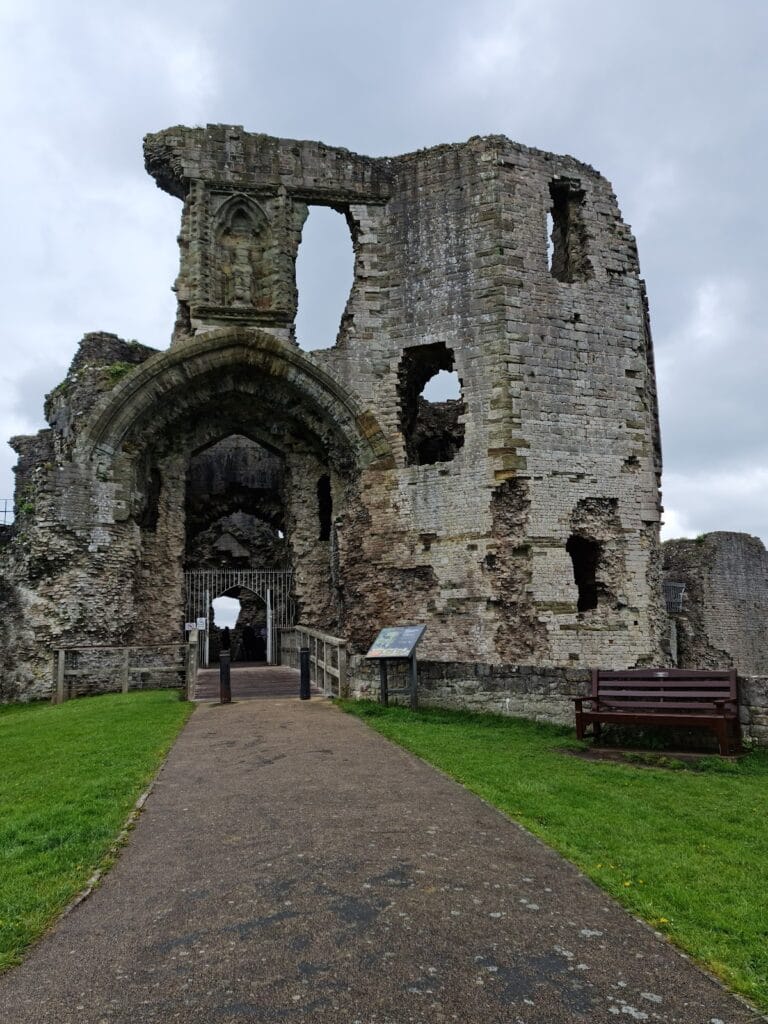Gwrych Castle: A Historic Welsh Castellated Mansion and Estate
Visitor Information
Google Rating: 4.5
Popularity: Medium
Google Maps: View on Google Maps
Official Website: www.gwrychcastle.co.uk
Country: United Kingdom
Civilization: Unclassified
Remains: Military
History
Gwrych Castle is situated near Abergele in Wales, United Kingdom. The site has a deep historical connection reaching back to the Iron Age, with evidence of ancient hillforts present on the estate.
The earliest known occupation includes Iron Age defensive structures built by local communities, predating the Roman presence. In Roman times, the area hosted a shrine, indicating religious activity during the 2nd century CE or thereabouts. Over subsequent centuries, during the medieval period, the site played a role in regional affairs, marked by several battle sites commemorated on stone tablets at the castle’s main entrance. The Lloyd family, an established local lineage, held a late-medieval house on the site from at least the 1500s, forming the ancestral basis for later developments.
Construction of the present Gwrych Castle began between 1819 and 1825, initiated by Lloyd Hesketh Bamford-Hesketh to honor his mother, Frances Lloyd, and their ancestors. Initially designed by Charles Busby in a Regency architectural style, the plans were soon replaced by evolving Gothic Revival designs by Thomas Rickman. Over the following decades, architects such as C. E. Elcock, Detmar Blow, and Henry Kennedy expanded and modified the structure, resulting in an extensive castellated mansion reflective of the 19th-century Gothic Revival movement.
Gwrych Castle served as the home of Winifred Bamford-Hesketh, granddaughter of the original builder, from 1894 until her death in 1924. Notably, she willed the castle to King George V with the hope that it would become an official Welsh residence for the Prince of Wales, although this offer was declined. After a brief period under the ownership of the Venerable Order of Saint John, the property was repurchased by Winifred’s husband, Douglas Cochrane, 12th Earl of Dundonald. Following this transaction, the castle’s contents were sold, and the family did not return to reside there.
During the Second World War, Gwrych Castle provided shelter for 200 Jewish children evacuated under the Kindertransport programme. Their care was overseen by the Zionist youth movement Bnei Akiva, representing an important chapter in the castle’s history as a refuge during turbulent times.
In the decades after the war, the castle was converted into a commercial attraction and hospitality venue. It drew around 10 million visitors over roughly 40 years, hosting a variety of events such as medieval re-enactments and the annual Dragon Rally motorcycle gathering. The castle also served as a training location for notable figures like boxer Randolph Turpin. However, the venue closed in 1987, and a series of ownership changes and unsuccessful renovation attempts followed. These included acquisition by American businessman Nick Tavaglione in 1989, whose plans for restoration ultimately fell through, leading to vandalism and structural decline.
Advocacy for the castle’s preservation began early with historian Mark Baker, who established the Gwrych Castle Preservation Trust. The Trust pressured local authorities into a compulsory purchase of the property and later secured ownership in 2018 with financial support from the National Heritage Memorial Fund. Since then, efforts have focused on stabilizing the ruins and celebrating Welsh heritage.
Renewed public awareness came through the castle’s use as the filming location for the television series “I’m a Celebrity…Get Me Out of Here!” in 2020 and 2021. This association brought media attention and funding that have supported ongoing conservation activities. Despite these endeavors, Gwrych Castle remains in a fragile condition, reflected by its categorization as a building at high risk on Wales’s national heritage register as of 2024.
Remains
Gwrych Castle is a substantial Romantic-era castellated mansion prominently positioned atop Cefn yr Ogof hill near Abergele. The building is primarily stone-built, featuring extensive battlements, towers, and other Gothic Revival architectural elements. Its placement on elevated terrain not only provides commanding views across the Irish Sea to the north and panoramic vistas eastward toward Castell Cawr hill, as well as westward to coastal landmarks such as the Little and Great Orme near Llandudno, but also offers natural shelter from prevailing winds.
The castle’s construction reflects a layered evolution from an initial Regency style to a vast Gothic Revival complex shaped by multiple architects through the early to mid-19th century. Although many original interior features have been lost, including fireplaces and stained-glass windows, elements such as stone tablets at the main gateway commemorate the medieval battles associated with the estate. While the interior is largely ruinous, some rooms and outbuildings remain accessible.
The surrounding estate historically encompassed a range of ancillary structures contributing to the castle’s operational life and aesthetics. These include a belvedere—a structure designed to provide scenic views—Lady Eleanor’s Tower, extensive estate walls, various agricultural buildings, a home farm, and six lodges. Several of these outbuildings and features hold their own heritage listings at Grade II* or Grade II status, indicating their architectural and historical significance.
The grounds once extended over a broad area, with historic records noting between 236 and 3,424 acres at various periods. Currently, approximately 200 acres remain under the care of the preservation trust. The entire setting integrates the castle with evidence of earlier occupation, including Iron Age hillforts and a Roman shrine on the estate, grounding the site in a long continuum of human use.
In recent decades, the castle’s fabric suffered severe damage. Following its closure, the removal of the lead roof led to water damage, and the destruction of battlements further compromised the structure. Looting and vandalism contributed to the loss of many original features, although archival collections retain original architectural plans and designs for the castle’s stained-glass windows. These documents are preserved by the Gwrych Castle Trust and the National Library of Wales, assisting ongoing preservation efforts.
During the 2021 filming of the television program hosted at Gwrych Castle, the natural protection afforded by its hilltop location was noted when nearby structures incurred damage from Storm Arwen while the castle itself remained unscathed. This enduring siting continues to mark Gwrych as a distinctive and historically layered site within the Welsh landscape.

